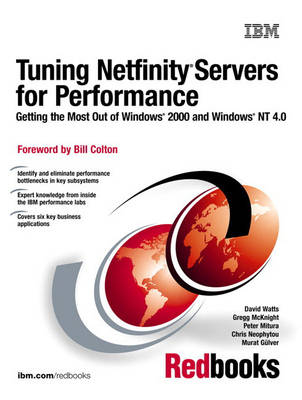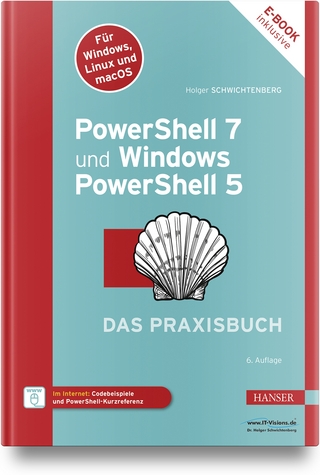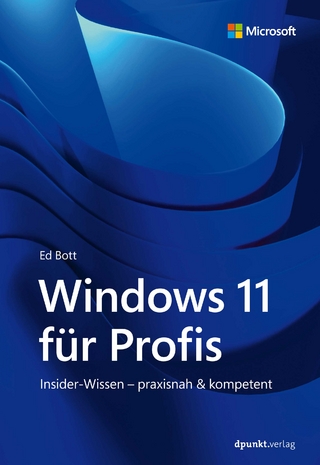
Tuning Netfinity Servers for Performance
IBM Press (Verlag)
978-0-13-040612-5 (ISBN)
- Titel ist leider vergriffen;
keine Neuauflage - Artikel merken
PLEASE PROVIDE
Written by the IBM insiders that create IBM's leading-edge Netfinity server product line, this book offers start-to-finish coverage of optimizing Windows 2000 Server and Windows NT 4.0 Server on Netfinity servers. The authors introduce the technologies built into each major Netfinity subsystem, identifying key configuration settings and rules of thumb for enhancing performance. They review both the Windows 2000 performance console and Netfinity Capacity Manager, offering detailed instructions, comparisons, and insight into when to use each tool. Next, they present in-depth coverage of analyzing Netfinity Server systems to identify performance bottlenecks, detailed recommendations for eliminating, anticipating, and avoiding them. Finally, they offer in-depth insight for optimizing the performance of leading server applications, including Lotus Notes, Microsoft SQL Server, Exchange, Oracle Server, SAP R/3, and Windows Terminal Services.
David Watts is an Advisory Specialist for Netfinity Servers at IBM's ITSO Center in Raleigh, NC, and author of Netfinity and Windows 2000 Integration Guide. Gregg McKnight, is Senior Technical Staff Member in the Netfinity Server Development and Performance Department. Peter Mitura is Technical Support Manager in the IBM Personal Systems Group. Chris Neophytou has worked as a Network Specialist with IBM Australia for two years, specializing in IBM Netfinity Servers, Windows NT, and Windows Terminal Server. Murat Gülver is a Technical Project Manager at Bordata Bilisim A.S in Turkey. He has three years experience with Netfinity and Microsoft server products.
1. Introduction.
Three Phases. Netfinity Performance Lab. IBM Center for Microsoft Technologies. This Redbook.
2. Understanding Server Types.
Domain Controllers. File and Print Servers. Database Servers. E-mail Servers. Web Servers. Groupware Servers. Multimedia Server. Communication Server. Terminal Server.
I. SERVER SUBSYSTEMS.
3. Introduction.
4. Processors and Cache Subsystem.
Processors. SMP Design and Performance. Processor Performance. Rules of Thumb.
5. PCI Bus Subsystem.
Design. PCI Bus Operation. PCI Bus Performance. PCI Bridges and Multiple PCI Buses. PCI Chipsets.
6. Memory Subsystem.
Memory Types. Specifying Memory Performance. Fast Page Mode Memory. Extended Data Out (EDO) Memory. Synchronous Dynamic Random Access Memory (SDRAM). Rambus Memory. Memory Interleaving. Addressing Memory above 4 GB. Advanced ECC Memory (Chipkill). Memory Rules of Thumb.
7. Disk Subsystem.
SCSI Bus Overview. SCSI IDs. Disk Array Controller Architecture. Disk Array Controller Operation. RAID Summary. ServeRAID RAID-5 Algorithms. Factors Affecting Disk Array Controller Performance. Fibre Channel. Disk Subsystem Rules of Thumb.
8. Network Subsystem.
Operation. Performance. Network Design. Device Drivers. Load Balancing. Data Transmission Unit Size Tuning. LAN Rules of Thumb.
9. Operating System.
Introducing Windows. Tuning. Distribute the Work Load. File Systems.
II. MONITORING TOOLS.
10. Performance Monitoring Tools.
Comparing the Tools.
11. Windows 2000 Performance Console.
Overview. System Monitor. Performance Logs and Alerts.
12. Capacity Manager.
What's New? Capacity Manager Data Files. Installing Capacity Manager. Monitor Activator. Report Generator. Report Viewer. Performance Analysis.
13. Task Manager.
Starting Task Manager. Processes Tab. Performance Tab.
III. WORKING WITH BOTTLENECKS.
14. Spotting a Bottleneck.
Step 1: Questions to Ask. Step 2: Analyzing the Server's Performance. Step 3: How Can It Be Fixed? Conclusion.
15. Analyzing Bottlenecks.
Basic Tuning Strategy. Factors Affecting Server Performance. Performance Bottlenecks. CPU Bottlenecks. Memory Bottlenecks. Disk Bottlenecks. Network Bottlenecks. Anticipating Future Bottlenecks. Performance Summary and Configuration Tips. Summary.
16. Case Studies.
Lotus Notes Server. File Server. ERP Application Server.
IV. APPLICATIONS.
17. File Server.
The Effect of Server Hardware on Performance. Optimizing Operating System Performance. Performance Monitoring.
18. Lotus Domino.
Important Subsystems. Sizing and Optimizing the Hardware. Optimizing Operating System Performance. Optimizing Lotus Domino Performance. Maintaining Lotus Domino Servers. Planning for Future Growth. Top 10 Ways to Improve Your Server's Performance. Summary.
19. Microsoft Exchange Server.
Mail Server. Groupware Server. Other Server Performance Factors. Exchange Server Performance Settings. Using the Performance Console. Capacity Management Using LoadSim.
20. SAP R/.
SAP R/3 Application Servers. Important Subsystems. Optimizing Windows NT and Windows 2000 Performance. SAP R/3 Monitoring and Tuning. Hardware Tuning and Configuration Tips. Summary.
21. Microsoft SQL Server.
What's New in Microsoft SQL Server. SQL Server Performance Tuning Basics. Important Subsystems. Optimizing Windows NT and Windows. The Database Environment. Optimizing SQL Server Subsystems. SQL Server Indexes. SQL Server 7.0 Performance Objects.
22. Oracle.
Oracle Architecture. OLTP vs OLAP. Important Subsystems. Operating System Optimization. Oracle Memory Optimization. Monitoring Database Performance. Performance Monitor Counters. Summary.
23. Windows 2000 Terminal Services.
Important Subsystems. Tuning. Citrix MetaFrame.
V. APPENDIXES.
Appendix A: Special Notices.
Appendix B: Related Publications.
IBM Redbooks. IBM Redbooks Collections. Referenced Web Sites and Online Documents.
How to Get IBM Redbooks.
IBM Redbooks Fax Order Form.
Abbreviations and Acronyms.
Index.
IBM Redbooks Review.
| Erscheint lt. Verlag | 30.10.2000 |
|---|---|
| Verlagsort | Armonk |
| Sprache | englisch |
| Maße | 178 x 236 mm |
| Gewicht | 1161 g |
| Themenwelt | Informatik ► Betriebssysteme / Server ► Windows |
| Informatik ► Betriebssysteme / Server ► Windows Server | |
| Informatik ► Weitere Themen ► Hardware | |
| ISBN-10 | 0-13-040612-0 / 0130406120 |
| ISBN-13 | 978-0-13-040612-5 / 9780130406125 |
| Zustand | Neuware |
| Haben Sie eine Frage zum Produkt? |
aus dem Bereich


